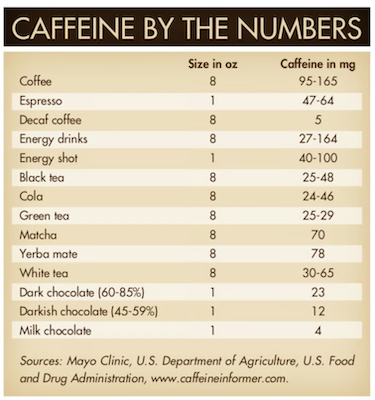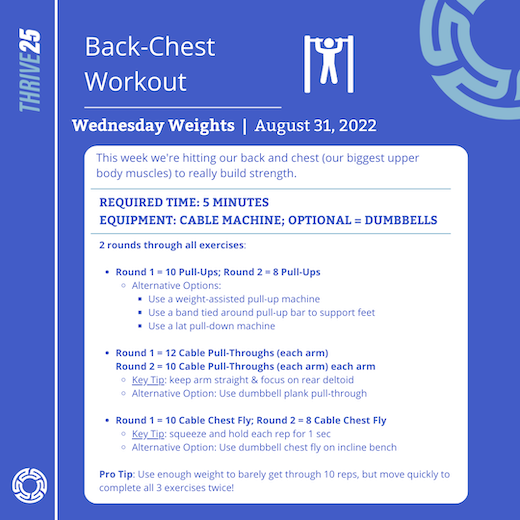Issue #13: How to Caffeinate the Right Way
Good morning. It's Wednesday, August 31st. On this day Thomas Edison invented the kinetoscope for moving pictures - 125 years later we have...Tik Tok. Also on this date, in 1990 Ken Griffey Sr. shows off his health & longevity by playing in a professional baseball game on the same team (Seattle Mariners) as his son, Ken Griffey Jr.
“Don’t give up on your dreams so soon, sleep longer.”
Don't miss today's Workout (strength builder) 🏋🏽 and Logic Puzzle (brain builder) 🧠!
Decline in brain's ability to create new memories during sleep deprivation - the hippocampus (memory center of the brain) essentially shuts down after multiple nights of poor sleep.
The Stages of Sleep
Sleep isn’t a singular activity. There are 5 stages of sleep and each serves a specific purpose.
Here’s a very quick summary of what happens as we doze off from being awake (active consciousness) and fall asleep:
Non-REM (rapid eye movement) Stage 1 - body temperature drops, heart rate and brain waves start to slow down. You can still easily wake up during this time - like when you startle yourself from a big muscle twitch.
Non-REM Stage 2 - now your brain waves become more powerful, creating “sleep spindles” that transfer your memories from the day (like remembering how your kid made you laugh as she danced through the kitchen) into the long-term storage vault in your brain.
Non-REM Stage 3 + 4 (Deep Sleep)* - this is the most restorative stage of sleep. Your blood pressure drops, muscles are fully relaxed, and your pulse/breathing really slows down. This is the time when your body repairs itself and your brain flushes out all the bad stuff.
REM - we’ve all heard about this stage. It’s when we encounter those crazy, vivid dreams. It’s also when we boost our creativity and problem solving skills. In fact, our brains are actually 30% more active during REM than when we’re awake! But not our muscles - we are completely immobilized (except for our lungs and eyes).
Dreams, Memories & Creativity
So why do these stages matter?
This complexity not only helps the body restore itself, but sleep is actually what drives our memory, creativity and problem solving - basically our entire mind.
Wait...What Happened Yesterday - it's during Non-REM sleep that our brain takes what happened that day and etches it into the right memory storage site. You need to remember where you parked your car last night and you want to remember that family vacation 2 months ago - but who cares where you parked your car a year ago. Man our brains are amazing!
Dreams in Real Life - seems to be the work of REM (dream sleep) when we are able to solve creative problems or see things in a new way. In a sleep study, when people woke up from REM, they were 30% more likely to solve word scrambles - and completed the puzzle faster and more intuitively. Check out our weekly puzzle below! 🧩
Fun Fact: Paul McCartney wrote Let It Be in a single day after waking up from a dream and going straight to the piano.
What's the Deal With...Caffeine
A psychoactive stimulant (also includes cocaine, methamphetamine, nicotine, Adderall), caffeine makes us more alert and feel more awake - which is why we head to Starbucks when we hit that afternoon crash.
Throughout the day our body creates adenosine - increasing our "sleep pressure" aka our need to sleep. This chemical is flushed out by the brain during sleep - eventually helping wake us up.
Wait...weren't we talking about caffeine? Turns out, caffeine latches on to adenosine receptors in the brain. We still build adenosine, but the signals don't get to the brain - which is why were are more alert - until we aren't! When the caffeine is metabolized that's when we feel the crash!
Caffeine has a quarter life of 10-12 hours. Basically this means 25% of the caffeine we drink or eat is still in our body 10-12 hours later. So if we have that coffee at 2pm, our sleep will be fighting against caffeine until midnight or later.
Pro Tip:
Try to wait 90-120 minutes after waking up until you have your first dose of caffeine. This will help prevent a mid-day crash and you won't be as likely to be screaming for more caffeine later in the day. ☕
Try to limit caffeine after 12pm (Noon). That's it - simple, right?*
Here are common sources of caffeine:
For most people some tea or dark chocolate in the afternoon won't affect sleep too much. But coffee, energy drinks, and soda can be big disruptors.🥤
Plus, most energy drinks and sodas are 12-16 oz so you might have to double the amount of caffeine listed in the chart above for these drinks.
*If you're truly a die-hard late afternoon coffee drinker, probably not the best idea to go cold turkey here. Slowly reduce your caffeine consumption over a couple of weeks - massive withdrawal headaches aren't going to help you thrive! Find substitutes that work for you - something like:
2 cups coffee -> 1.5 cups coffee -> 1 cup coffee -> 1 cup green tea -> 1 cup hot water w/ lemon & salt
Speed Read
Health & Longevity in the News
Mood Rings Make a Comeback: Happy Health just raised $60M to bring the Happy Ring, a first wearable designed to measure your stress, mood, and sleep 24/7 in real-time.
Don't Believe the Hype: In 2008, GSK spent $720M, betting on early-stage results of resveratrol (an ingredient in red wine), a polyphenol that has been dubbed the "fountain of youth" and how they impact "sirtuins." (This has also been a part of the anti-aging protocol of Dr. David Sinclair ). But efforts to repeat experiments have come up empty. It's definitely not over...more money is being spent and we'll be here to update you on what happens next.
Beware of the "Nutritionist": So what's the difference between a certified dietician and a nutritionist. Let's just say, anyone can be a "nutritionist" on social media. If you're looking for an expert - make sure they are a Certified Dietician (RD/RDN) or a Certified Nutrition Specialist (CNS) - both have significant requirements of expertise.
Wednesday Weights
This week we're hitting our back and chest - our biggest upper body muscles. Some people love 'em, some hate 'em, but pull-ups are great strength builders - plus, you'll be working on that grip strength for the dead hang test!
Click HERE to view the workout on our YouTube channel.
Workout and video courtesy of Connor J. Obrochta. Check out all of Connor's workouts on Playbook!
Have an awesome Wednesday and we'll see you back here tomorrow morning - before your first cup of coffee!
Check out the latest workout videos on our YouTube channel
Got feedback? Tell us what you think at team@thrive25.com
Want this direct to your inbox? Sign up here
Why Thrive25
We’re 40-something dads that felt our bodies and minds start to slow down and we’re not ready for that. We found too much information on every subject. So we started Thrive25 to transform what we’ve learned into something useful for the rest of us to spend just 3-5 min a day to optimize our health & longevity.
This newsletter is for you and we truly value your feedback. Never hesitate to reach out to us at team@thrive25.com.
To health!
Sign up for free:
The information in this newsletter is for informational purposes only and may not be appropriate or applicable based on your individual circumstances. Thrive25, Inc. does not provide medical, professional, or licensed advice. Please connect with your healthcare professional for medical advice specific to your health needs.










